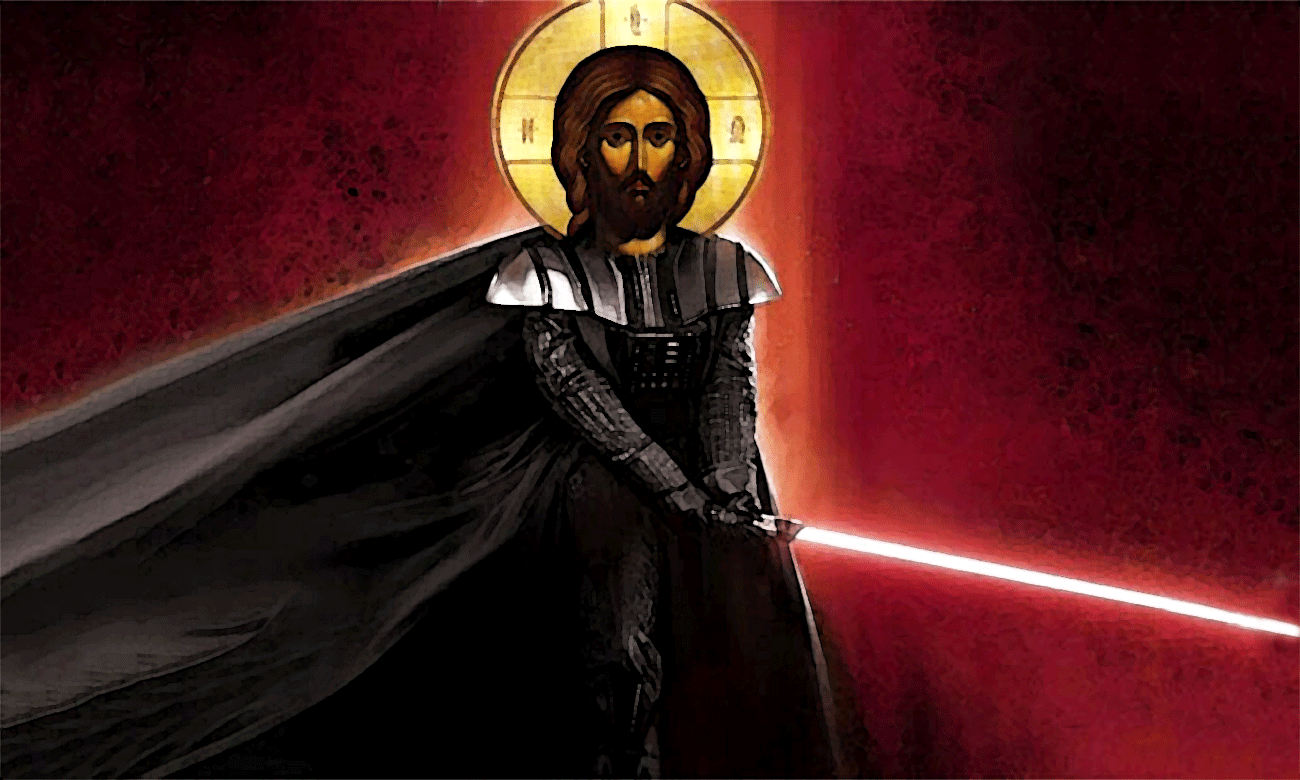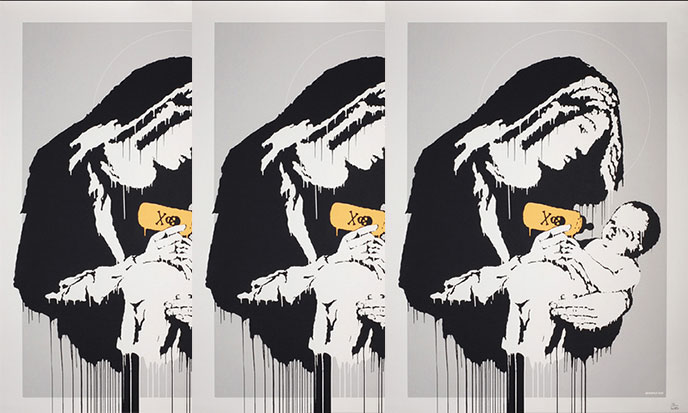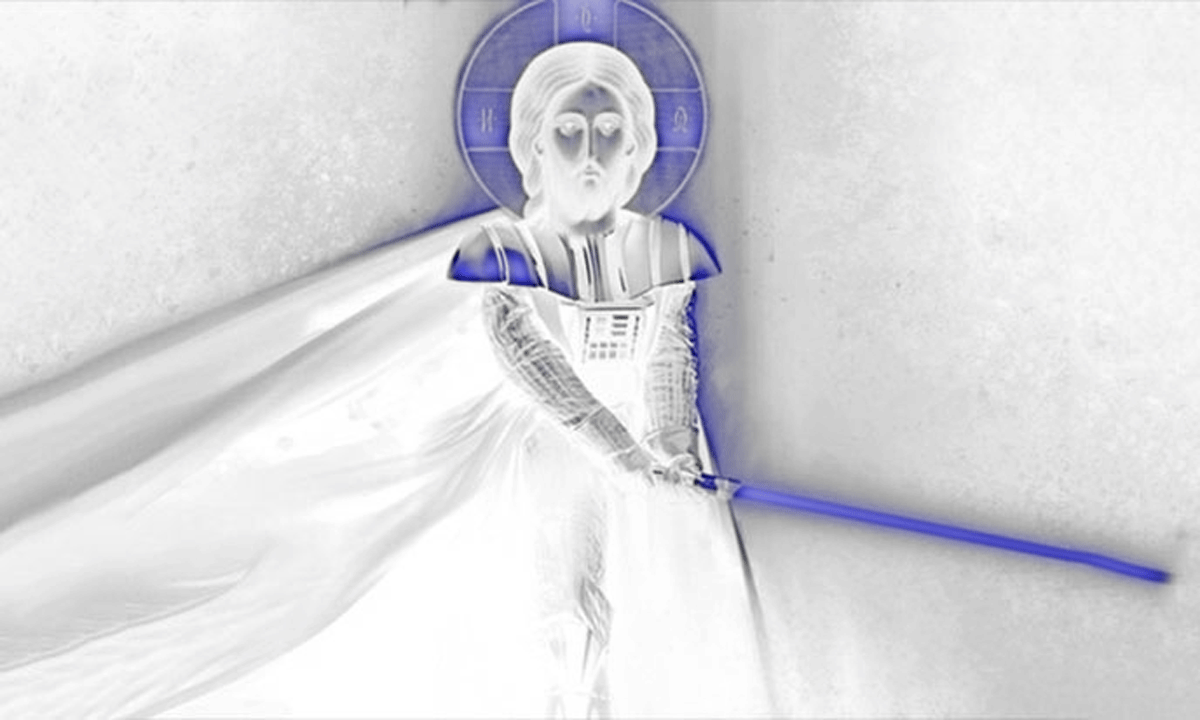
“I don’t come to bring peace but war, said Jesus. I threw fire on the world and I will fan until it burns.” (source)gospel of Thomas Now it burns.
For Christians, and perhaps also for others, Jesus is the face of unconditional love, the image of the Linked who connects to the others by the power of his own link, or the one who unties. To them, his historical existence is anecdotal.
His physical body is of little importance, even if the mystery of his face remains quite disturbing. We remember the incredible adventures concerning the Shroud of Turin: is it authentic? fake? Making fakes did not start with the web… The greatest caution is recommended in a subject as sensitive as Jesus. Here, I do not want to do anything else but interrogate history and myth. Before any further speculation, let us ensure that the man, a certain Yeshua Bar Yosef, is real.
From myth to reality
Several authors think that Jesus is a composite hero, nourished by many influences and many prophets of that time. There were indeed a large number of them in the first century, around the Mediterranean Sea, and perhaps elsewhere. A crazy movie echoed it, the Monthy Python’s Life of Brian, with a herd of “kings of the Jews” condemned to crucifixion. Joking aside, we only lend to rich people. Yet it happens that so many sequences of Jesus’ life are remakes of former traditions. The life of Jesus and his character are so moving, so successful… that some have deemed too good to be true.
A thesis called Mythism explains that Jesus-Christ has no historic reality, which seems obvious. Wikipedia openly practices misinformation, as usual, by refuting this thesis, which remains alive and well, and whose arguments have been reinforced in recent years. However, I found some lines that, for once, are not in this revisionist line. “Some researchers believe, however, that the matter can not be resolved with the available evidence, or that the issue should be reconsidered. For the archaeologist Yvon Thébert despite the prevailing opinion about it, “the Christ myth theory is often challenged too quickly, and the historicity of Jesus is not an historical problem because we have no data for ask him. “
A Puzzle Called Jesus
Spinoza –or one of his followers– even found popes to question the reality of Jesus. “Boniface VIII said that the Gospel, as well as all other laws, taught many truths and lies, for example, a trinity, which is false, the birth of a virgin, which is impossible, the incarnation and transubstantiation, which are ridiculous. I do not believe either, he said, in the Virgin than in a donkey, nor in her son, than in the foal of a donkey.” (source)The Spirit of Spinoza, Treatise of the Three Impostors: Moses, Jesus, Mohammed, p.175. As for Pope Leo X, he is even more direct: “Leo X, entering one day a cabinet where the treasures were spread, exclaimed:” This fable of Jesus Christ helps us to enrich ourselves.” (source)The Spirit of Spinoza, Treatise of the Three Impostors: Moses, Jesus, Mohammed, p.176.
A lot of sequences of the life of Jesus are remakes of previous traditions. Osiris, Christ of the Atlanteans, or Prometheus, Christ of the Greeks, are models that may have been used to form Jesus Christ, not to mention Enki, Christ of Sumer, or Viracocha, Christ of the Andes, or Manu, Christ of India, or many others. But the closest model is an Eastern Christ, Mithras.
![premier plan : sculpture de Mithra, 2e siècle AEC - By Michel wal (Own work) [GFDL (http://www.gnu.org/copyleft/fdl.html) or CC BY-SA 3.0 (http://creativecommons.org/licenses/by-sa/3.0)], via Wikimedia Commons ---- arrière-plan : Détail du plafond mosaïque, baptistère de Ravenne, Italie - By Incola (Own work) [CC BY-SA 3.0 (http://creativecommons.org/licenses/by-sa/3.0)], via Wikimedia Commons ---- les deux modifiés par / both modified by Stef Kervor pour Eden Saga](https://eden-saga.com/wp-content/uploads/mithra-baptist-ravenne-688po.jpg)
Beside, according to the best-known Christmas tale, the gospel nativity, Jesus was not born in Nazareth, but in Bethlehem in a barn. How come ? No surprise, says the gospel. There was a population census in Judea at that time, his parents had to leave Nazareth to be registered in their hometown. En route, they stopped in Bethlehem to spend the night, but it was full everywhere. Of course, the whole Judea was on the roads for the census. The fable seems credible. Except that the meticulous Roman records show no trace of a census in those years. Another wrong detail, and a new stroke in the myth.

Yeshua bar Yosef
Still worse, the Roman records do not mention the killing of a person called Yeshua bar Yosef, Jesus’ official civil status. For some theologians, this story is based on a translation mistake. Another one! Yeshua belonged to the Nazarene sect, the Gnostics hardliners, under the guidance of a certain Yacoub, St. Jacques in the gospels, Yeshua’s elder brother. What can we think about the elder brother of a virgin’s son? “This is part of the mystery.” The question is how this word Nazorene became Nazarean in all the modern versions of the gospels.
It is quite simple indeed. When the monks copyists have read Nazarene in the Coptic version, as they were unaware of the sect in question, they changed it into Nazarean, better known by their readers. So they had to justify Jesus’ birth in Bethlehem. That is why they invented the story of a census. Anyway, it was necessary that Yeshua was not born in his home, in order to set the beautiful image of the manger and the shepherds, borrowed to a former Eastern tradition: actually the adoration of the child-god by the shepherds comes from Mithraism.
Though false, the image of a rise in poverty is consistent with the character of Yeshua. In the Gospel of Thomas, the narrator insists on the deprivation of Rabbi Yeshua, who had not even a stone on which to lay his head. In truth, he told us “I’m here to tell you a secret knowledge.” This is the key to our salvation, add the Gnostics. What knowledge? Silly question. If the knowledge is secret, no one knows obviously what it is. Okay, but since he came to reveal this knowledge, it is no longer secret.
The Gospel of Judas and that of Thomas have in common is a valuable quality: authenticity. Discovered in the sands of the desert, they have suffered only half a century of censorship by the Catholic clergy. We can not say the same of the canonical Gospels, which suffered a lot of abuse over the councils and theological fluctuations. The Nag Hammadi texts have a double freshness, that of the origin, and that, caustic, of gnosis. It blows a perfume of modernity that does not only come from translation.
Jesus and Buddha
It reveals a Rabbi Yeshua fascinating of complexity, the antithesis to the Saint-Sulpice’s iconography of a Jesus pink and blue, flanked by chubby cherubs and bleating sheeps. The Gnostics would have vomited him, they who see the world infested with evil and so unworthy of our regrets. The world, maybe, but what about all our beloved ones over there? The Gnostic view recalls another one, that of Sakya Muni also called the Buddha, that son of a Hindu Raja who made the show five centuries before Jesus.
Sakya Muni
Born very fortunate, brilliantly educated, fed and clothed, Sakya Muni got rid of all that to walk the road with his pilgrim’s stick. Under a fig tree, all of a sudden, the awakening stroke him. Enlightenment like a lightning! At that very moment, he realized that he had wasted his time. Like the Gnostics, he sees that life is a valley of tears, a sea of pain, and that one must detach from it without regret. Old refrain in all sects. But the demiurge story is more original and deserves attention.
For the Gnostics, our creator is not the true god. Man was created by a false god. An apprentice sorcerer. A demiurge, as they say in these cases. Is it the reason that makes this Earth a valley of tears? Is the demiurge the devil? Is he committed to our destruction, or worse? In your opinion? We stumble on a theological issue. If the devil made us, he is not evil, since there is good in man. So if the demiurge is not the devil, who is he exactly? A sub-god? A divine hard-worker in search of independence?

The Demiurge
Or simply a developped man, a talented geneticist, who merely tinkered his own DNA to give birth to a fragile creature, with a short life, so short that he called us the ephemerals. “God created man in His image.” In this case, God is a man like you and me. Man is a god who does not know he is. There is no difference in nature between god and man, just a difference of degree. That is the secret of Jesus. This is his salutatory revelation. This is why he called himself son of Man.
How God became a man if he was already one? It does not matter anyhow. Jesus knew all that, he was Gnostic like his brother Jacques, all these stories had no secret for him. The Book of Enoch was his bedtime book. What? You did not know Jesus had a brother? He even had several, including Jacques, who was the big boss of the Nazorenes, a Gnostic sect that grouped extremist hardliners. The Nazorenes wanted to clean the Augean stables of the corrupted Sanhedrin.
The Secret of Enoch
But let’s get back to the bedtime book of Jesus, ie the Book of Enoch. It talks of the demiurges, Elohim the creators, “males and females, from heaven” who created Adam in their image. In the land of Eden. With their DNA. Eden, Adam, DNA.Lost in translation : ADN in french. It’s closer. And the saga goes on. When Jesus speaks of his Father in heaven, whom does he speak about? The demiurge or the true god. The demiurge has created the car, not the driver. The demiurge made the body, as a prince of the matter.But the light of the spirit existed before the creator. By giving life to a bio-manipulated body, he could not prevent the eternal soul from slipping in it. Thus, in the myth of Prometheus, when he shapes us into clay, Athena intervenes and adds a soul. That is why we are of divine nature, though created by an intermediary, we are like him, connected to the Source, therefore of divine nature. This is the secret of Jesus.
Between God and man, there is no difference of nature.
There is just a difference of level.
Cultivate God in you.
In the Andes, the day after tomorrow in the morning, will appear a gentle man, kind, who will heal the sick ones, who will divert men from bloodshed. He will be called Tiki Viracocha the Second. He will show people of that time how to do without their cars. One is not born to be a pilot, will he tell them. One does not serve the car. No demiurge has made our soul. Our spirit is uncreated. The light is eternal. Our current appearance is contingent, only the light is necessary.

Thus
Each has its own beliefs, and the sacred cows will be well guarded. Our ancestors swallowed everything. They swallowed snakes with the ease of a snake charmer at the square Djema-el-Fnah in Marrakech. For centuries, all these texts remained locked in libraries strictly protected by the Holy See. Until the invention of typography around 1440, all writings were copied by copyists. Monks, most often. In their convent they copied what the superior told them to copy, omitting and adding what he told them. The control of the Catholic Church was almost total for a long time.
A host of bogus anecdotes, full of errors and anachronisms, were added by the copyists. It was counting without the web, without the planetary dissemination of all the texts that were once inaccessible. And to correct the course.
I am a mythologist and philosopher. As a friend of wisdom, I take a critical look at all mythologies: is it true? Is it distorted? Is it exaggerated? For what reasons? My work has no other purpose than to face the naked truth — if such a thing does exist! “With a critical eye and a mind free of everything a priori. That is why many of you read me.” Your convictions are yours. They help you to live, far from me the idea of dynamiting them, from the ancient Greek dunamos, which means angel.
Let this not prevent believers from believing, nor the unbelievers from not believing. All beliefs are infinitely respectable, although I prefer to align myself with my eternal principle of uncertainty, choosing to believe without believing.
The Jesus Case
- Another Side of Jesus
- Damn Magicians
- Unlikely Jesus
- Another Side of Virgin Mary
- The Origin of the Cross
- Chrism Unveiled
- Two Christianities
- What Middle Ages?
- Seven Fake Centuries
- Jesus of Avignon
- Jesus And His Models
- Christianism and Mithraism
- Enoch And Jesus
- Esus Christus
- Osiris And Jesus
- Dionysus Son Of God
- Double Dionysus
- Orpheus Christ
- Beneath The Holy Grail
- The Apocalypse Of Zacchaeus
- The Hidden Agenda Of Zacchaeus
- Simon The Magician



